Civic Architects has transformed an age-old building complex from the 1930s by renowned architect Alexander Kropholler; the architecture firm has partly renovated, transformed, and expanded the campus. The Schoenenkwartier Museum is a new and inventive knowledge centre for shoe design, production, and fashion in Waalwijk, the Netherlands—the Dutch leather and shoe city. The museum campus comprises a series of 12,000 objects in several permanent exhibitions, a knowledge centre with a research library, a workshop space, and an auditorium, a museum cafe, and laboratories for design and prototyping. Civic Architects was inspired by Waalwijk’s rich past in shoemaking while designing the building. The Amsterdam-based firm has conceptualised a design that celebrates the city’s cultural heritage, craftsmanship, and legacy in shoe design.
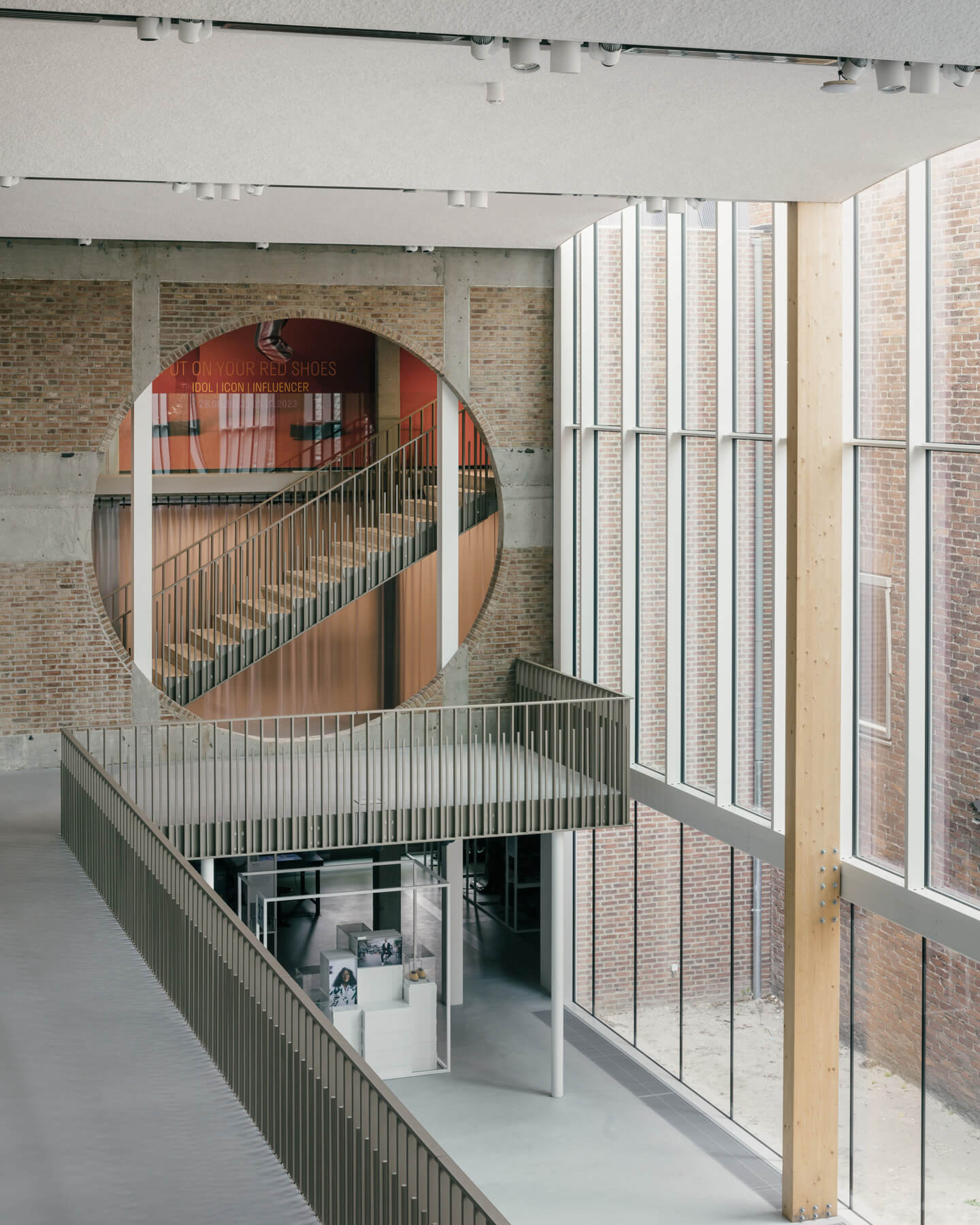
Civic Architects is a Dutch design studio, which believes in architecture through research, they merge proven technology with new ideas and combine thinking with design, theory with practice, and urbanism with detailing. With the Shoe Museum, they aim to bring shoe craftsmanship back to where it started, and to make Waalwijk a sought-after destination for shoe experts and innovators. “Waalwijk is a typical small European city that became big through the industrial development of a local craft, but at the same time is struggling with its future. Leather processing and shoe manufacturing formed the culture, economy, and pride of the region, and made it an international player. But leather and shoe production have now disappeared. The building is a combination of a museum and an innovation centre, interwoven into one living entity. A research library is located between the exhibition rooms, there are several innovations and design labs for education and artists in residence, and various possibilities for conferences and company presentations,” says Rick ten Doeschate, partner at Civic Architects.

The Shoe Museum is located in Waalwijk’s historic city centre, where the town hall and city hall were housed in the last century. The museum is conceptualised to revitalise the city centre and be an inviting place for locals and tourists alike. “The general functions of the museum, such as the work cafe with the open work labs, are directly visible from the square and are also open to the public, even for people not visiting the exhibitions. In addition to being a museum and innovation centre, the Shoe Museum is a welcoming place for the community. The hospitable public atmosphere is also noticeable when you enter the building through the historic arcades with generous pivoting and sliding doors. The entrance area is completely open and in the centre of the building runs an inner pavement with a cobble pattern, reminiscent of a covered city square,” mentions Ingrid van der Heijden, partner at Civic Architects.
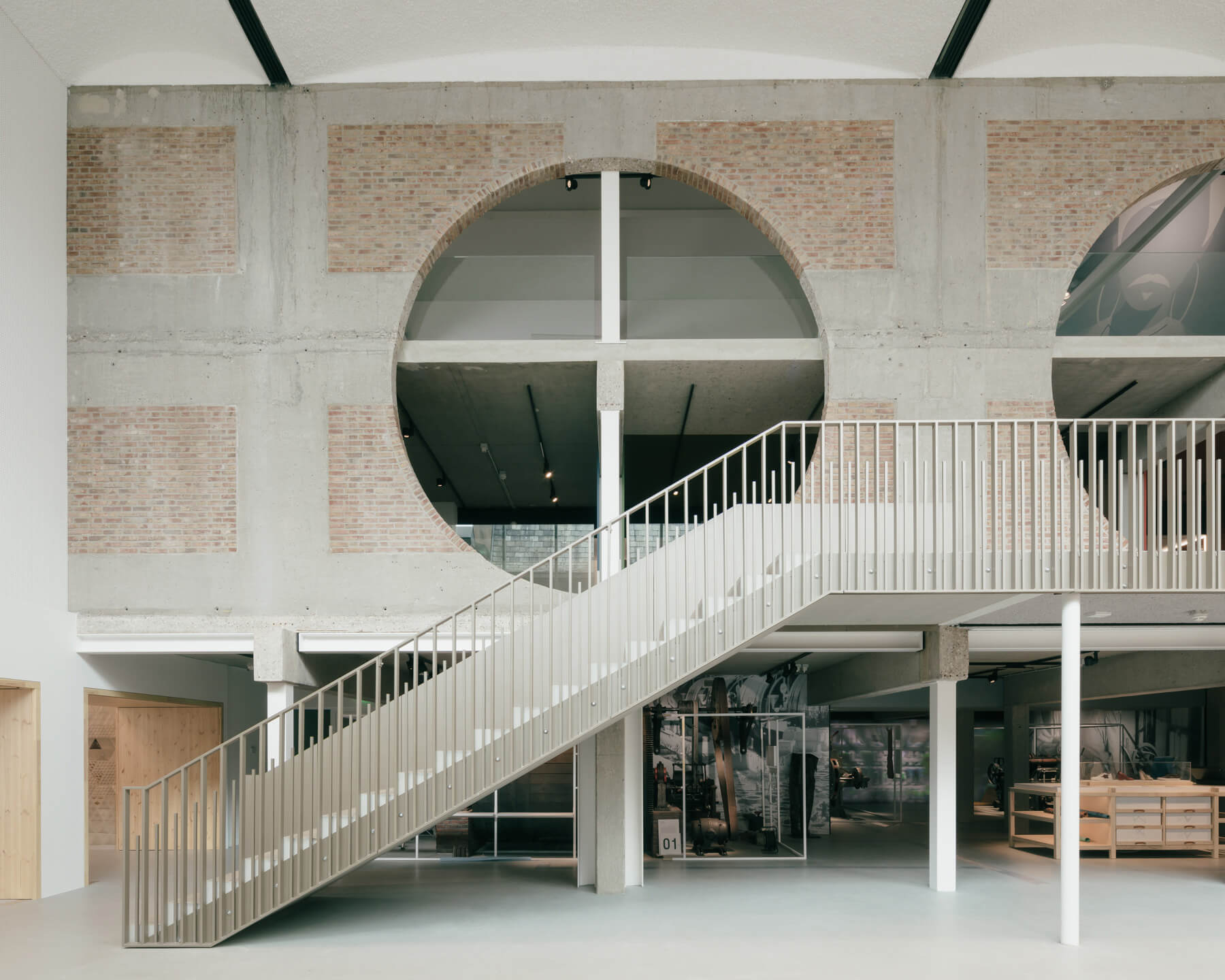
The campus includes museum buildings that are in keeping with the modern times. Since the visitors comprise international fashion experts and families from the neighbourhood, the museum has been conceptualised in a way that can be explored in various ways. Cleverly placed staircases and routes make it possible for guests to take shortcuts and only visit the highlights or specific exhibitions. Alternatively, guests can also follow the entire, beautifully thought-out route of the museum.
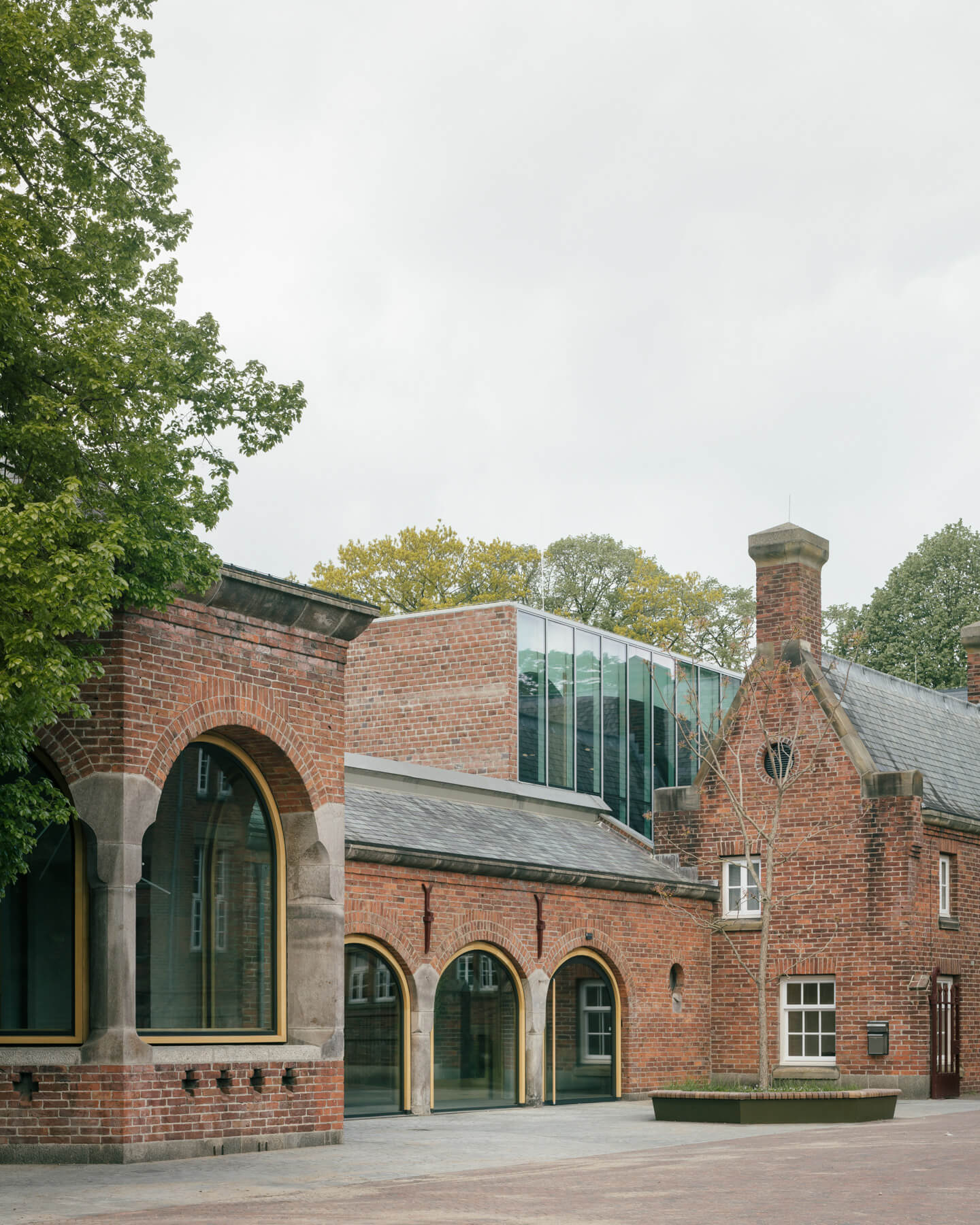
“The museum has been designed in such a way that everyone can determine their own way and pace. The completely open ground floor brings together all the functions, from cafe to exhibitions, and the centrally added garden gives flexibility and choice for public routing. The spectacular new large round openings, cut out of the stripped-down old façade of the 80s office wing, allow you to catch a glimpse of the exhibitions from here. The open layout of the museum means that there are many views right across the museum. This connects the collections and the people in a relaxed way. It makes the Shoe Museum a lively place for cross-pollination and inspiration. Sometimes, you can also look outside at one of the gardens or the historic buildings, to process your impressions or simply enjoy the beautiful place,” says Gert Kwekkeboom, partner at Civic Architects.

The material palette of the museum comprises brick, steel, concrete, and wood. These materials were chosen as they complement the historical building, are familiar materials for all visitors and are environmentally sustainable. “The materials reinforce the atmosphere of the collection and the historical building and form one collective artwork. At the same time, it appears that some visitors may feel uncomfortable or unwelcome in abstract museum spaces because they don’t visit them that often, while the museum wants to be open to the widest possible audience. The choice of real materials and geometric forms are used to transcend the target group in the sense that they appeal to universal experiences of the human senses; from sight to hearing, from touch to smell. The materials are also chosen with sustainability in mind. On the one hand, this means that they must be able to withstand rough handling and age well, and on the other hand, that they must be sustainably sourced and reused wherever possible,” states Jan Lebbink, partner at Civic Architects.

Furthermore, the Shoe Museum is one of the most important building complexes by architect Alexander Kropholler from the 1930s, which was released in phases and extended once in the 1980s. Civic Architects have renovated the existing structures and have expanded the complex with a new building section. The recognisable Kropholler principles and details were restored during the renovation, and they also inspired the new design. “Kropholler’s architectural ideas were also somewhat rigid and constraining, which is not in keeping with the role that the museum wishes to fulfil in society today. That’s why a conscious decision was made to continue working with the original materials and techniques, but to design more liberally. The new sawn openings in the garden fit well with the arched arcades of the old town hall but are bricked in a complete circle, which would be a sin according to Kropholler’s theory. The vaulted ceiling doesn’t have one continuously repeating size but is staggered several times. These and other subtly subversive design details bring Kropholler’s rigid architectural ideas to the present day, but ultimately the old and new beliefs form one unit,” adds Ingrid van der Heijden.
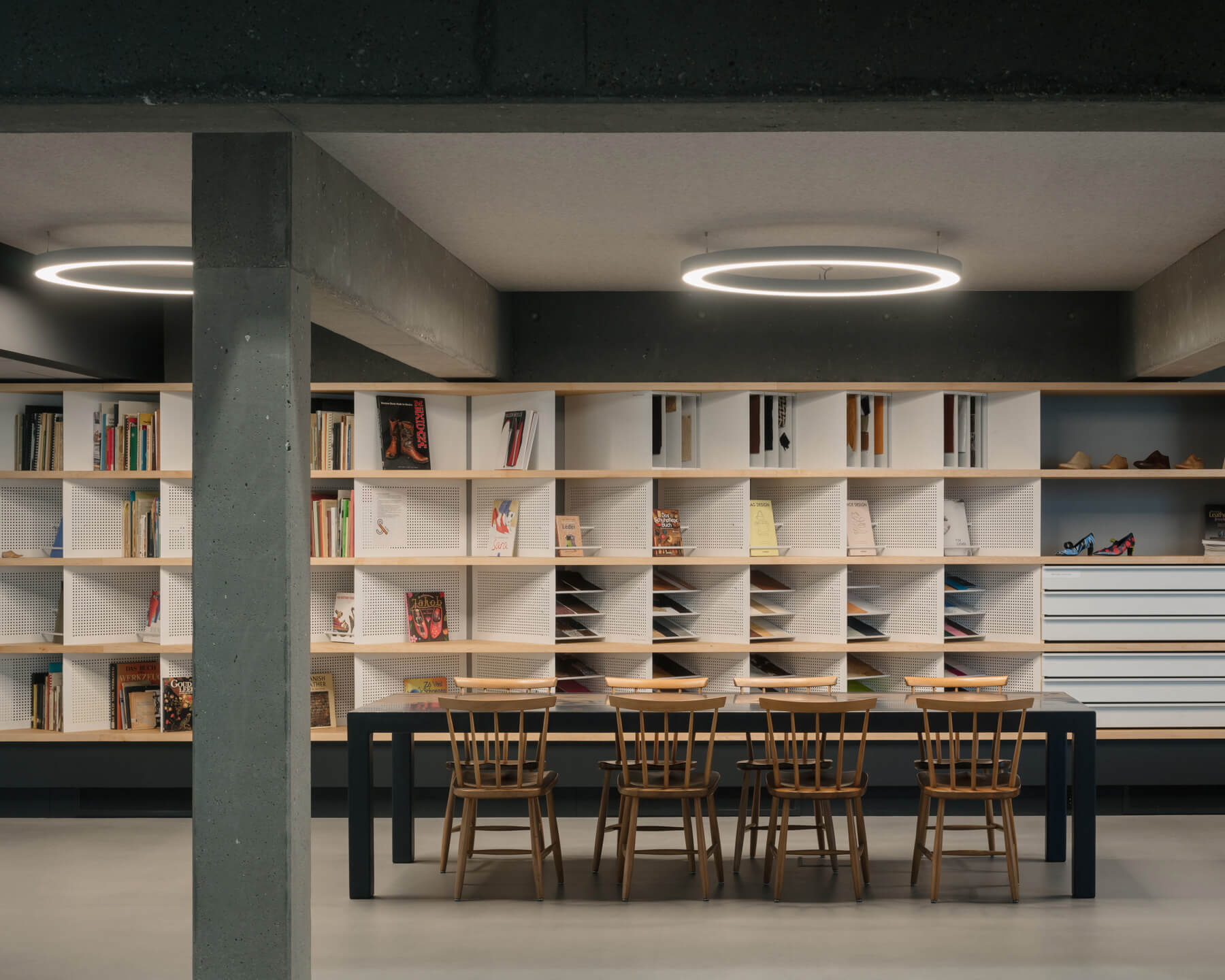
Moreover, the Shoe Museum houses several design and manufacturing labs that designers, educational institutions, and the business community can use to experiment with new circular techniques. Additionally, Civic Architects have incorporated various circular techniques and materials in the interiors and architecture of the museum. The architects have transformed a historic building into a new-age museum by preserving as much as possible and experimenting with new, sustainable materials. “The central multifunctional desk in the entrance area is made of lime hemp with ceilings made of synthetic felt from recycled PET bottles. The undisputed eye-catcher in the entrance area is the experimental ceramic tile wall, developed in cooperation with the agency La-Di-Da. The wall combines ceramic craftsmanship with innovation and sustainability through the unusual shape of the 3D printed moulds and the use of waste from other glazing processes,” mentions Gert Kwekkeboom.
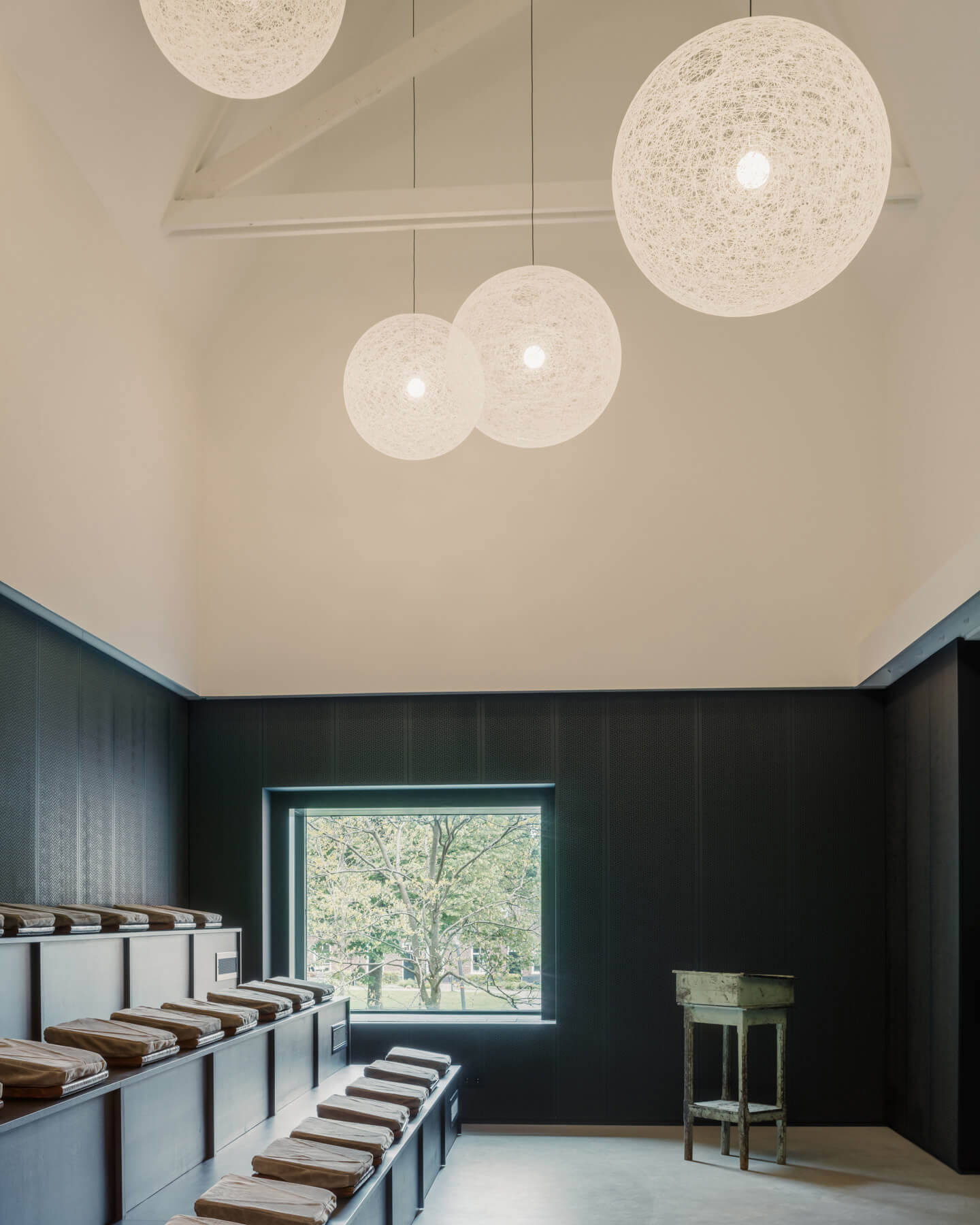
The Shoe Museum’s interiors were crafted with the help of collaborations with—regional artisans, design students, and local businesses. “In cooperation with ceramics studio Cor Unum, the prototype for the tile wall was developed and implemented as a small-scale traditional production, partly released by people with a distance to the labour market. Students from the SintLucas vocational school designed the leather cushions for the auditorium, and local businesses provided the furnishings for the office environment. The Shoe Museum shows that the link between social cohesion and architectural products can be realised in public buildings. It is therefore one in cultural cohesion, social cohesion, and regional identity,” concludes Rick ten Doeschate.

